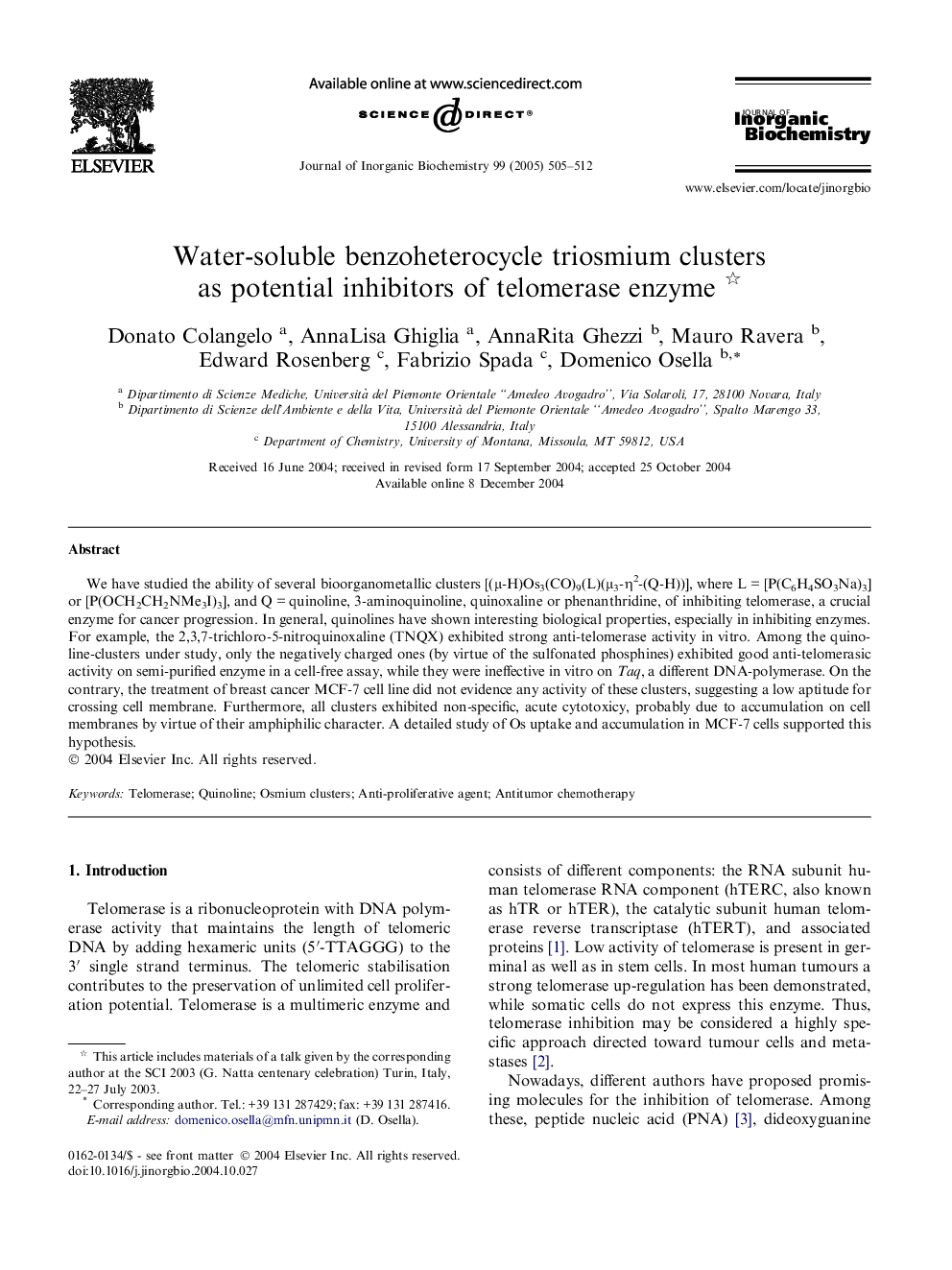| Article ID | Journal | Published Year | Pages | File Type |
|---|---|---|---|---|
| 10574941 | Journal of Inorganic Biochemistry | 2005 | 8 Pages |
Abstract
We have studied the ability of several bioorganometallic clusters [(μ-H)Os3(CO)9(L)(μ3-η2-(Q-H))], where L = [P(C6H4SO3Na)3] or [P(OCH2CH2NMe3I)3], and Q = quinoline, 3-aminoquinoline, quinoxaline or phenanthridine, of inhibiting telomerase, a crucial enzyme for cancer progression. In general, quinolines have shown interesting biological properties, especially in inhibiting enzymes. For example, the 2,3,7-trichloro-5-nitroquinoxaline (TNQX) exhibited strong anti-telomerase activity in vitro. Among the quinoline-clusters under study, only the negatively charged ones (by virtue of the sulfonated phosphines) exhibited good anti-telomerasic activity on semi-purified enzyme in a cell-free assay, while they were ineffective in vitro on Taq, a different DNA-polymerase. On the contrary, the treatment of breast cancer MCF-7 cell line did not evidence any activity of these clusters, suggesting a low aptitude for crossing cell membrane. Furthermore, all clusters exhibited non-specific, acute cytotoxicy, probably due to accumulation on cell membranes by virtue of their amphiphilic character. A detailed study of Os uptake and accumulation in MCF-7 cells supported this hypothesis.
Keywords
Related Topics
Physical Sciences and Engineering
Chemistry
Inorganic Chemistry
Authors
Donato Colangelo, AnnaLisa Ghiglia, AnnaRita Ghezzi, Mauro Ravera, Edward Rosenberg, Fabrizio Spada, Domenico Osella,
